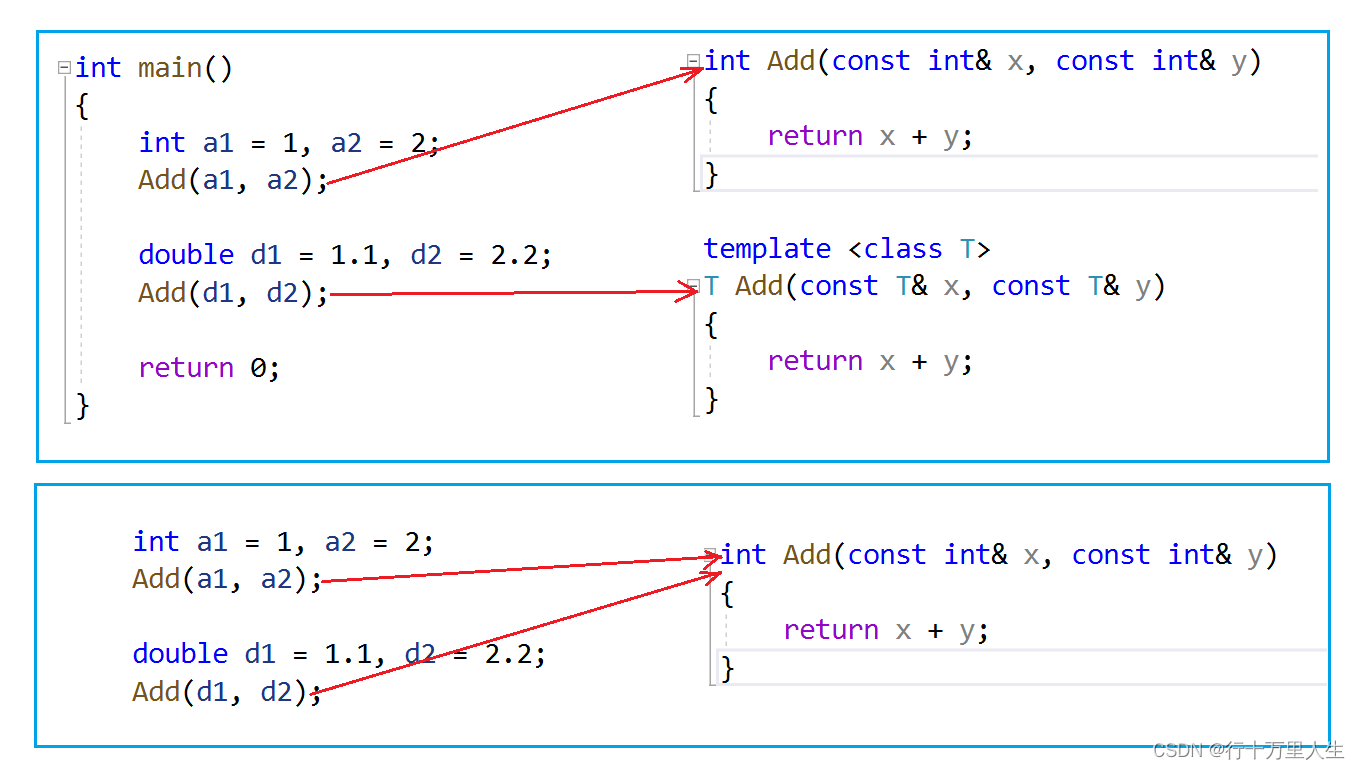一、函数模板的匹配原则
int Add(const int& x, const int& y) {return x + y; }template <class T> T Add(const T& x, const T& y) {return x + y; }int main() {int a1 = 1, a2 = 2;Add(a1, a2);double d1 = 1.1, d2 = 2.2;Add(d1, d2);return 0; }
-
一个非模板函数可以和同名的函数模板同时存在。
-
匹配原则:
- 匹配合适的情况下,编译器会优先调用非模板函数,而非通过模板实例化出一个新的函数。
- 如果模板能实例化出匹配更好的函数,则优先模板。
- 普通函数支持隐式类型转换。

二、类模板的实例化
template <class T>
class Stack
{
public:Stack(int n = 4):_top(0),_capacity(n){cout << "Stack(int n = 4)" << endl;_a = new T[n];}~Stack(){cout << "~Stack()" << endl;delete _a;_a = nullptr;_top = _capacity = 0;}private:T* _a;int _top;int _capacity;
};int main()
{Stack <int> s1; // 1. 类名 <数据类型> 才是实例化类的类型Stack <double> s2; // 2. 显式实例化的类型不同,它们就是不同的类return 0;
}










预习报告)


 输出格式备查)


)
)
的计算方法与源程序)
